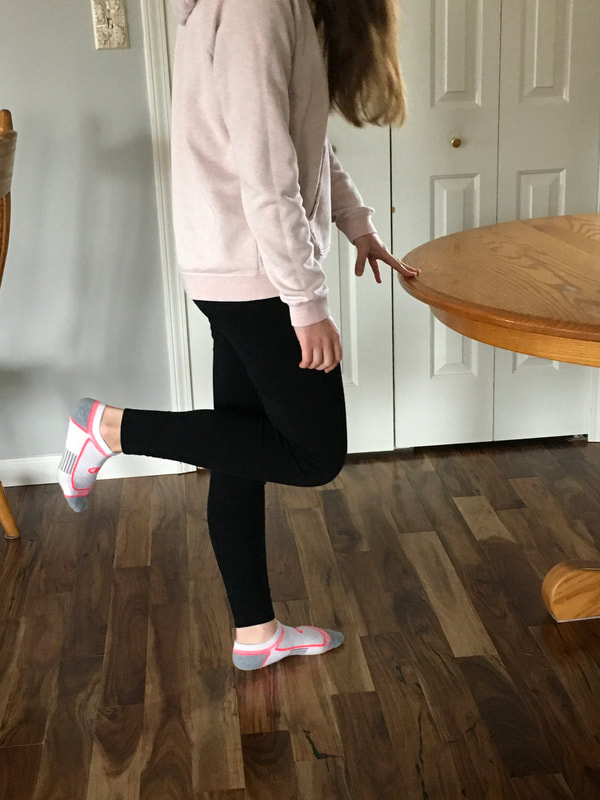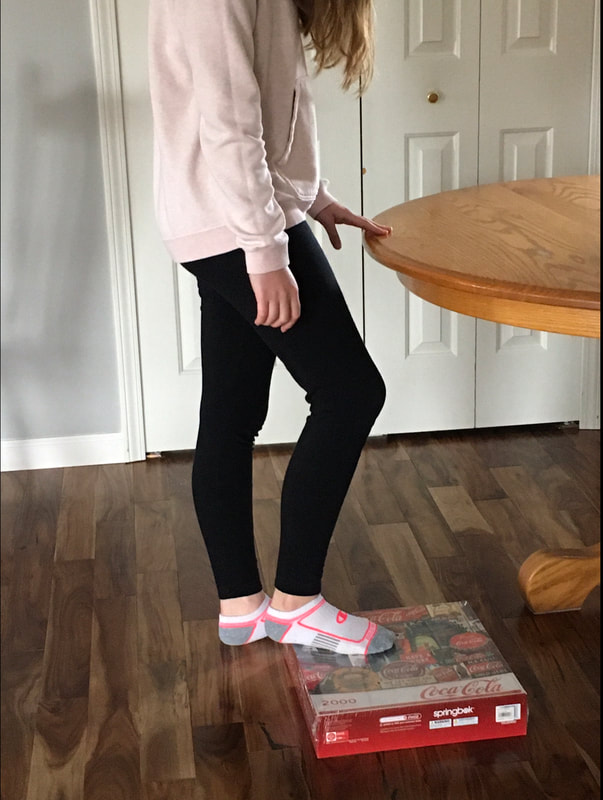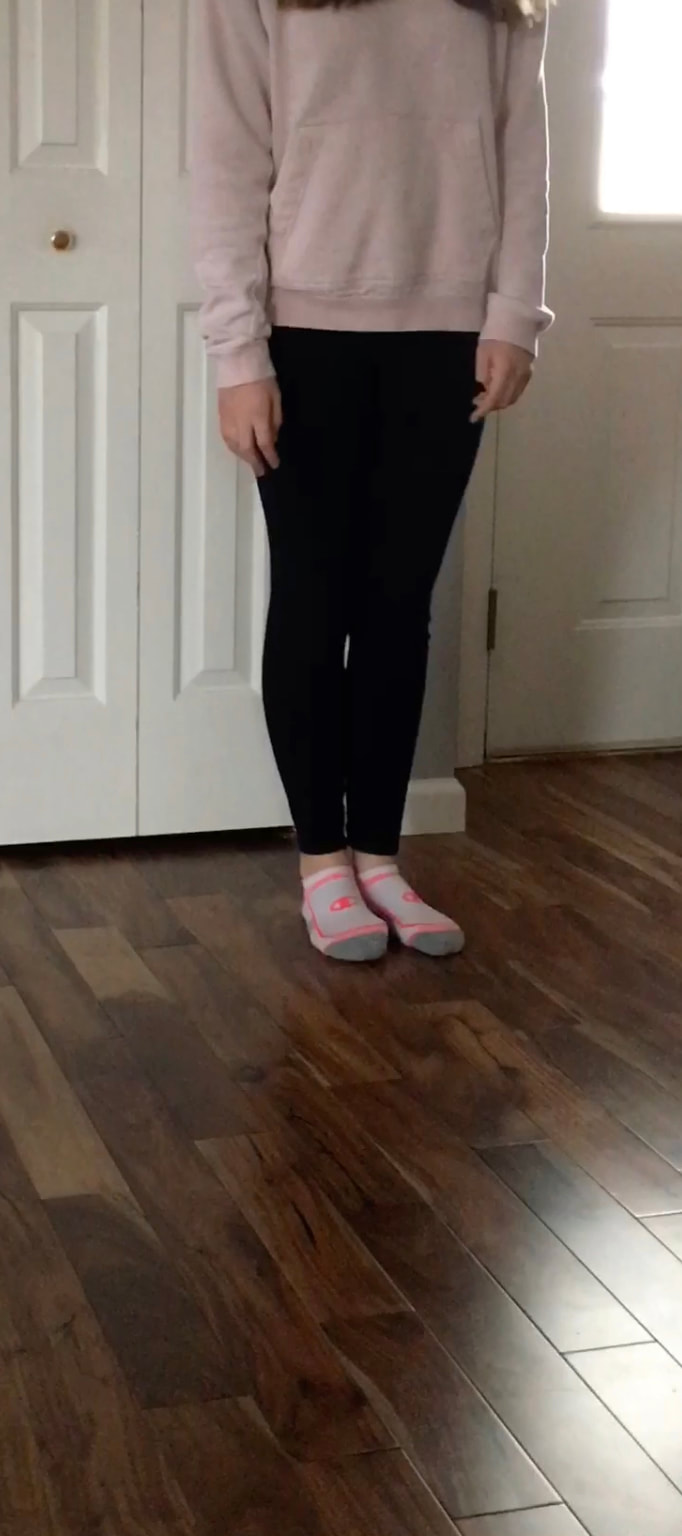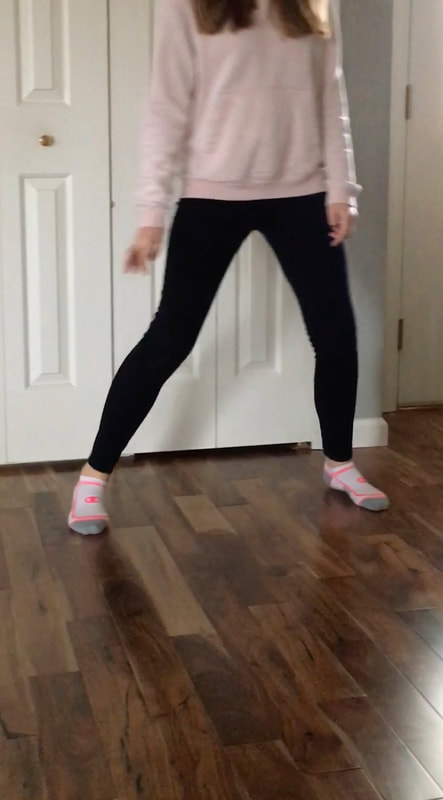- Home
-
Resources
-
Exercise & Activities
>
-
Strength
>
- Full Body - Motor Planning & Gross Motor Activities
- Full Body - Kicking
- Full-Body Crab Walking
- Full Body - Laundry Basket Push/Pull
- Legs - Lower Extremity Strengthening Activities
- Legs - Step ups onto a stool
- Legs - Squatting
- Arms
- Core - Core Stability & Upper Extremity Strengthening Activities
- Core - Core exercise on pillow
- Core - Four Point
- Core - Using Bubbles for Core Strength
- Coordination >
- Balance >
- Stairs >
-
Strength
>
- Sensory Motor >
- Stretches & Flexibility >
- Caregivers Tips >
- Equipment Use >
- By Diagnosis >
- Outdoor Activities
-
Exercise & Activities
>
- Contact
- Bulletin Board
Standing on one leg can improve overall balance as well as help with steps and
stepping over objects. Have your child lift one leg and try to stand for as long as
possible. They may have a table or sturdy object nearby for support, but have them
try this without arm support if possible. If this is too hard, they can also stand with
one foot up on a bench, stool, book, etc, as pictured on the right. This can be made
into a contest with siblings or parents, they could see if they can count to 5 or 10
before needing to use the table or they can do this while watching TV or playing
a game at a table.
stepping over objects. Have your child lift one leg and try to stand for as long as
possible. They may have a table or sturdy object nearby for support, but have them
try this without arm support if possible. If this is too hard, they can also stand with
one foot up on a bench, stool, book, etc, as pictured on the right. This can be made
into a contest with siblings or parents, they could see if they can count to 5 or 10
before needing to use the table or they can do this while watching TV or playing
a game at a table.
Your child can also work on sidestepping to improve balance. They may need your hand
or a table for support. Have them take steps sideways and try to keep their balance. Have
them go in both directions. They can move around a table or along the counter.
or a table for support. Have them take steps sideways and try to keep their balance. Have
them go in both directions. They can move around a table or along the counter.
Have your child practice a tandem stance like above. They may need a table or
stable object next to them for support. Have them practice with right and then left
foot in front.
stable object next to them for support. Have them practice with right and then left
foot in front.
In addition to the above activities, you can work on balance with any of the following, keeping in mind your child may need help or someone close by for safety:
- Kicking a ball. Kick a ball back and forth with siblings or parents.
- Kicking over objects. Your child may find it easier to kick an object that is not moving, especially if you are not able to go outside to kick a ball. A balloon, pillow or other soft object may work. I often have students kick over foam bowling pins.
- Standing on a cushion or pillow can work on balance. Walking over cushions or pillows also can work on balance.
- Marching in place. Have your child march in place to improve balance. They may need to stand at a table or counter for support.
- Walking on a line on the floor. If possible, tape a line on the floor and have your child try to walk on the line without stepping off. They can pretend they need to get across a bridge or not step off into water, lava, etc.
- Walking on a line in tandem stance. If their balance is good enough, they can advance to walking on a line in a heel to toe or tandem stance as shown above in the pictures.
- Walking backwards. Your child can work on balance by walking backwards in a safe area without obstacles, holes or other safety issues.
- Home
-
Resources
-
Exercise & Activities
>
-
Strength
>
- Full Body - Motor Planning & Gross Motor Activities
- Full Body - Kicking
- Full-Body Crab Walking
- Full Body - Laundry Basket Push/Pull
- Legs - Lower Extremity Strengthening Activities
- Legs - Step ups onto a stool
- Legs - Squatting
- Arms
- Core - Core Stability & Upper Extremity Strengthening Activities
- Core - Core exercise on pillow
- Core - Four Point
- Core - Using Bubbles for Core Strength
- Coordination >
- Balance >
- Stairs >
-
Strength
>
- Sensory Motor >
- Stretches & Flexibility >
- Caregivers Tips >
- Equipment Use >
- By Diagnosis >
- Outdoor Activities
-
Exercise & Activities
>
- Contact
- Bulletin Board





